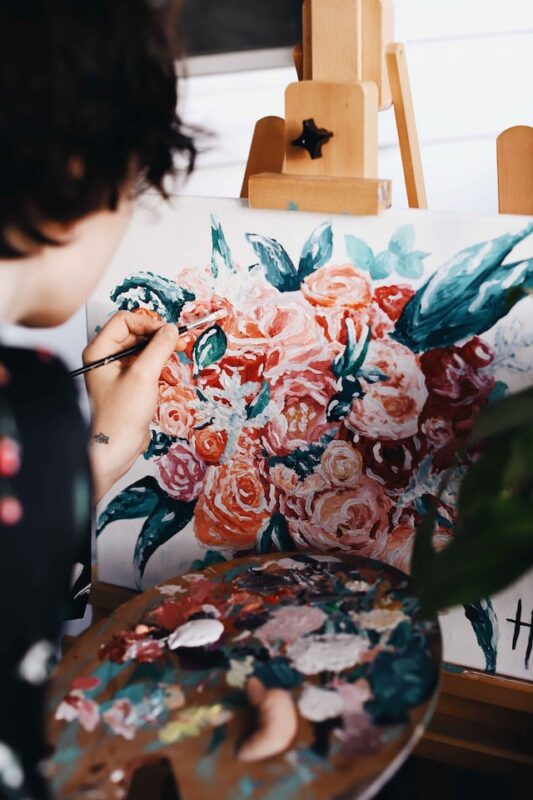Blog
Oil Painting for Beginners: 5 Simple Solid Steps of Oil Painting

Oil Painting for Beginners: How to Start Oil Painting Step-by-Step Guide
Have you ever wanted to try oil painting, but weren’t sure where to start? If so, then this blog post is for you! In this step-by-step guide, we’ll walk you through the process of getting started with oil painting. From choosing the right materials to creating a masterpiece, we’ll provide you with all the information you need to make your painting dreams come true. So if you’re ready to get creative and learn how to start oil painting, read on!
We’ll begin by taking you through the basics of choosing the right supplies. You’ll need to consider the type of surface you want to paint on, as well as what kind of oils and solvents will work best for your project. We’ll also discuss proper cleaning techniques, so that your painting materials last longer and keep your work looking great. Once you have all the supplies ready to go, it’s time to start actually painting! We’ll guide you through some essential oil painting techniques that will help improve your skills and help create a beautiful masterpiece.
What You Need to Start Oil Painting
To get started with oil painting, you will need the following supplies:
-Oil paintbrushes in various sizes
-Palette knives
-Canvases or canvas boards
-Oil paints
-Easel (optional)
-Rags or paper towels
-Solvent (for cleaning brushes)
Now that you have your supplies, you’re ready to start painting!
Good luck!
Oil Painting for Beginners: The 5 Basics of Oil Painting

Oil Painting for Beginners – Supplies – Photo by tabitha turner on Unsplash
Oil painting is a popular medium for both amateur and professional artists. The basic techniques of oil painting are not difficult to learn, and with a little practice, you can produce beautiful paintings.
To get started, you will need some supplies. Here is a list of what you will need:
-Paints: You will need a basic palette of oil paints in order to start painting. A good selection of colors to start with would be white, black, yellow, red, blue, and green.
-Brushes: A variety of different sized brushes is essential for oil painting. Look for brushes that are made specifically for oil painting; these brushes will have natural bristles instead of synthetic fibers.
-Palette: A palette is used to hold the paint while you are working. You can purchase a pre-made palette or make your own using a piece of glass or plexiglass.
-Canvas: Canvas is the traditional support for oil paintings; however, there are other supports available such as wood panels or Masonite boards. Choose the support that you feel most comfortable working with.
-Easel: An easel is not required but it can be helpful in keeping your canvas at the correct angle while you are painting.
Now that you have all of your supplies, you are ready to begin! Here are some basic steps to get you started in oil painting:
1) Begin by sketching out your design on the canvas. This will help you plan out your painting and make sure that everything is in proportion.
2) Squeeze a pea-sized amount of paint onto your palette for each color you plan to use.
3) Dip your brush into the paint, then tap the excess off on a rag or paper towel.
4) Begin to paint, using long strokes and working from light colors to dark colors. You can use blending techniques to soften edges and create subtle effects.
5) Allow the painting to dry before adding any additional layers of paint. When the painting is completely dry, you can varnish it with a protective coating if desired.
Oil painting is a rewarding art form that can produce beautiful results with practice and patience!
Oil Painting for Beginners: Different Techniques for Oil Painting
Oil painting is a versatile medium that can be used in a variety of ways to create different effects. The most common techniques include:
-Glazing: This involves applying thin layers of paint over a dry base layer to create a translucent effect.
-Impasto: This involve using thick layers of paint to create a textured surface.
-Drybrush: This is when you apply paint to the surface using just the tips of the brush strokes, resulting in a dry, textured finish.
-Scumbling: This is when you use a rough, textured brush to create a soft, blended effect.
-Pallet Knife: This involves using a palette knife to scrape and mix paint on the canvas, creating interesting textures and effects.
-Wet-in-Wet: This technique involves working with wet layers of paint to create organic shapes and forms.
Oil Painting for Beginners: Advice for Beginner Oil Painters
As a beginner oil painter, there are a few pieces of advice that will help you get started on the right foot. First, it is important to choose the right type of paint for your project. There are a variety of oil-based paints available on the market, so be sure to do your research and select the paint that best suits your needs. Second, always start with a clean canvas. Oil paint can be notoriously difficult to work with, so it is important to make sure your canvas is free of dirt, dust, and other debris. Third, invest in quality tools and supplies. Quality brushes, paints, and canvases can make a huge difference in the quality of your work. Finally, practice! The more you paint the more comfortable you will become with the medium. Don’t be afraid to experiment with different techniques and styles. canvas is free of any dirt or debris before you begin painting. Third, be patient! Oil painting takes time and practice to master, so don’t get discouraged if your first few attempts are not perfect. With a little bit of patience and practice, you’ll be painting like a pro in no time!
Final Words…
Oil painting can be a wonderful and rewarding hobby for any artist, whether you are a complete beginner or an experienced painter. This step-by-step guide should help you get started on your oil painting journey and provide the basic tools and techniques that all artists need to create beautiful works of art. While it might take some time to master this craft, it is always wise to start with small projects as you familiarize yourself with the materials and techniques involved in oil painting. With these tips in mind, we hope that you find success and joy in mastering this beautiful art form!
Good luck on your oil painting journey!
You might want to check out – How to Draw & Coloring Majestic Animals: Cats – A Simple Tutorial.
What are your thoughts about Oil Painting for Beginners: 5 Simple Basics of Oil Painting? Please leave your comments below.



